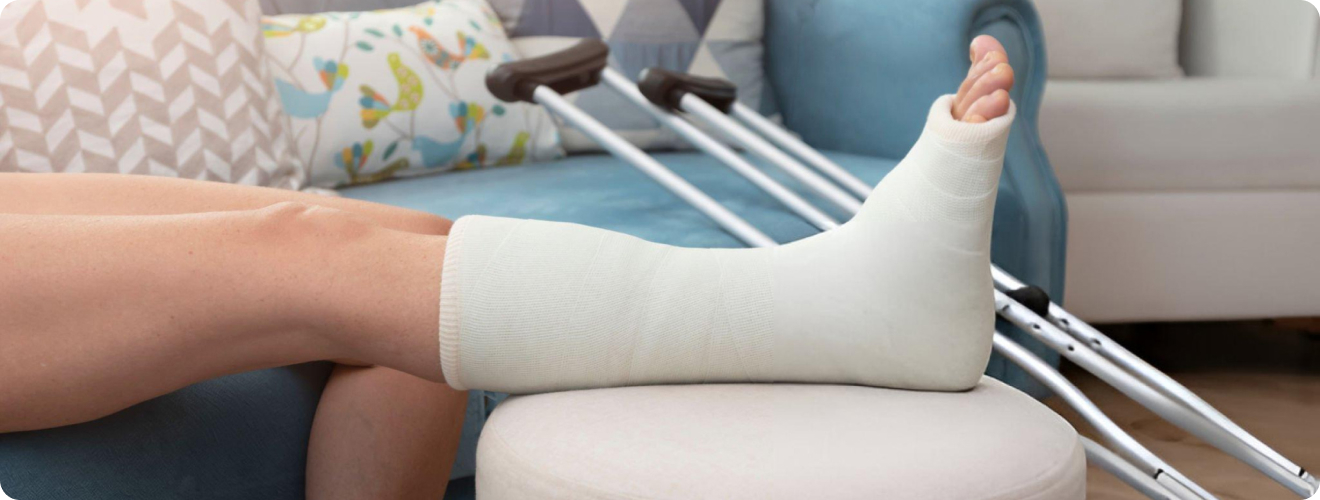


A fracture, commonly known as a broken bone, is a disruption in the continuity of bone tissue. From a minor hairline crack to a complete shattering of bone, fractures can affect anyone irrespective of age.
While often associated with sudden traumatic events like falls or accidents, they can also result from repetitive stress or underlying medical conditions that weaken bone structure.
Understanding fractures – how they are classified, what factors increase their risk, how they are accurately diagnosed, and the array of modern management strategies available – is crucial for healthcare professionals and public awareness and prevention. This article delves into these key aspects, providing a comprehensive overview.
At its core, a bone fracture is a break. Bones are remarkably strong and resilient, designed to withstand considerable force. However, when the force applied to a bone exceeds its structural capacity, it breaks. This force can be a sudden, high-impact trauma (e.g., a car accident, a fall from height), or it can be a lesser force applied repeatedly over time (stress fracture), or even minimal force if the bone is already compromised by disease (pathological fracture). The process of bone healing is a complex biological cascade, involving inflammation, soft callus formation, hard callus formation, and eventual bone remodelling, aiming to restore the bone to its original strength and shape.
Fractures are classified in numerous ways, providing a systematic approach for diagnosis, communication among clinicians, and guiding treatment strategies. Key classification criteria include:
Fractures may be of two types based on skin integrity:
Fractures may be classified by the way the bone has broken:
Fractures may be of two types based on displacement:
Fractures are also classified by the location of the specific bone (e.g., femoral fracture, radial fracture) and its part (e.g., neck of femur fracture, distal radius fracture).
Fractures can be of specific types such as:
While accidents can happen to anyone, certain factors significantly increase an individual’s susceptibility to fractures:
Accurate and timely diagnosis is critical for effective fracture management. The process typically involves:
Diagnosis typically begins with a clinical assessment. This involves history taking, where healthcare professionals gather details about the injury’s mechanism (like how a fall happened), the onset of pain, any pre-existing conditions, and current medications. This is followed by a thorough physical examination, which includes carefully checking for swelling, bruising, deformity, and tenderness over the bone, as well as assessing the range of motion (though this might be limited by pain). Crucially, a neurovascular assessment is performed to check pulses, sensation, and motor function distal to the injury, vital for ruling out any nerve or blood vessel damage.
Imaging studies may be of various types as elucidated below:
Fracture management aims to achieve bone healing, restore function, alleviate pain, and prevent complications. Treatment approaches have become increasingly sophisticated, moving towards more stable fixation and earlier rehabilitation.
The R principles of fracture management involve the following steps:
Realigning the displaced bone fragments. This can be:
Maintaining the reduced fragments in proper alignment until healing occurs. Methods include:
Non-surgical management is suitable for non-displaced or minimally displaced fractures and those that are inherently stable. This approach primarily involves immobilisation using casts, splints, or braces, alongside pain management with analgesics. Regular follow-up X-rays are crucial to monitor healing progress. Once the initial immobilisation is removed, rehabilitation through physiotherapy becomes vital to help patients regain strength, range of motion, and overall function.
Surgical management is followed for displaced, unstable, or open fractures, those involving joints, or cases of non-union (failure to heal) or malunion (incorrect healing). Common surgical techniques include Open Reduction Internal Fixation (ORIF), where bone fragments are directly realigned and secured with implants, offering precise reduction. For long bones, Intramedullary Nailing is highly effective, involving the insertion of a metal rod into the bone’s hollow centre for stabilisation. In severe joint fractures, particularly in older adults, Arthroplasty (Joint Replacement) may be performed to replace part or all of the damaged joint.
There have been significant advancements in fracture care such as:
Rehabilitation is integral to fracture management, starting almost immediately after injury, even while the affected limb is immobilised, through exercises for unaffected body parts. This crucial process includes physiotherapy to regain range of motion, strength, balance, and proprioception. Occupational therapy then helps patients adapt to daily activities and regain their independence. Pain management remains an ongoing and essential component throughout this healing and recovery journey.

Fractures, though common, represent a diverse range of injuries, each demanding a tailored approach to management. From the swift diagnosis facilitated by advanced imaging technologies to sophisticated surgical techniques and comprehensive rehabilitation protocols, the field of orthopaedics has made remarkable strides in improving patient outcomes.
Understanding the various classifications of fractures, recognising their associated risk factors, and appreciating the intricacies of modern diagnosis are fundamental steps. Crucially, the emphasis now extends beyond mere bone healing to ensuring a full restoration of function, minimising long-term disability, and enhancing the overall quality of life for individuals affected. As research continues to uncover new insights into bone biology and refine treatment methodologies, the future of fracture care promises even greater precision and more effective pathways to recovery.
The 7 common types of fractures include Transverse, Oblique, Spiral, Comminuted, Greenstick, Stress, and Open (Compound).
A fracture means a broken bone, where there’s a partial or complete break in the bone’s continuity.
The 10 common causes of fractures include Traumatic injuries (falls, accidents, sports), osteoporosis, nutritional deficiencies (calcium, Vitamin D), physical inactivity, excessive alcohol consumption, smoking, certain medical conditions (e.g., endocrine, GI disorders, cancer), long-term medication use (e.g., corticosteroids), repetitive stress/overuse, and environmental hazards (increasing fall risk).
Spread the love, follow us on our social media channels